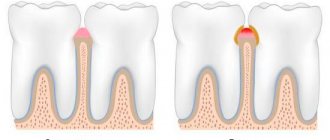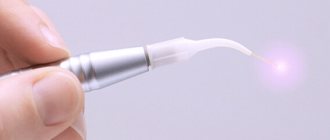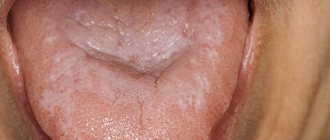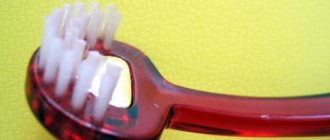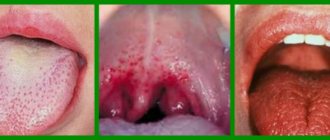- What kind of disease is candidiasis?
- Symptoms
- Causes
- Treatment
- Therapy methods
- Preventive measures
Many parents are aware of such a common problem in children as thrush, which is characterized by the appearance of a white coating on the tissues of the oral cavity. In medicine, this pathological condition is called “candidiasis” and refers to fungal diseases. Candidiasis most often develops in a child’s mouth in the first year of life. The symptoms of thrush are very disturbing for the baby, but timely treatment allows you to get rid of the fungus quickly and without consequences.
What kind of disease is candidiasis?
According to statistics, about 30% of infants experience candidiasis. The causative agent of the disease is Candida fungus. These specific microorganisms are normally present in the body of every person, even in the absence of health problems, but only in small quantities.
Oral candidiasis in children is much more common, since the immune system of children is not yet formed and is not able to resist pathogenic microorganisms and the effects of negative external factors.
With weakened immunity and the concomitant influence of provoking factors, the fungus begins to actively multiply, affecting the mucous membranes. Without therapeutic treatment, candidiasis is eliminated in exceptional cases. Much more often, if thrush is not treated, complications arise, and the infection itself spreads throughout the body.
Candidiasis of the mucous membranes of the genital organs
Damage to the mucous membranes of the genital organs by candida in children is the second most common after oral thrush. The disease in girls occurs as vulvitis and vulvovaginitis, in some cases together with urethritis, in boys - as balanitis, balaposthitis, in some cases together with urethritis. Candidiasis is characterized by swelling and hyperemia of the tissues; grayish-white filmy deposits or a curd-like layer appear on the mucous membranes. Sometimes children are bothered by itching. When the urethra is damaged, pain occurs when urinating.
The main causes of damage to the mucous membranes of the genital organs in children are congenital and acquired immunodeficiency conditions, infectious diseases, endocrinopathies, intoxication and disruption of the microbial landscape of the mucous membranes (dysbiosis). The disease often develops as a result of long-term use of antibiotics. A risk factor is the weakening of parents’ attention to the child’s intimate hygiene, as well as visiting kindergartens, when as a result of multiple contacts and frequent acute respiratory infections, children’s immunity decreases.
The diagnosis is established on the basis of the clinical picture of the disease and the detection of yeast-like fungi of the genus Candida during direct microscopy of the native preparation.
During treatment, the antifungal drug Pimafucin in the form of a cream is used topically once a day until the symptoms of the disease disappear. For common forms of candidiasis, antifungal drugs are used orally (Ketoconazole or Flucanazole) and topically at the same time.
Symptoms
Oral candidiasis in children can have different forms of manifestation and severity of symptoms: mild, moderate and severe. As a rule, each form corresponds to the stage of development of the disease. If therapy is not carried out in a timely manner, the signs of fungal infection become more intense and the number of symptoms increases.
In mild forms of the disease, a red rash appears on the oral mucosa, which is covered with a white coating on top. At the next stage, the child experiences swelling of the tissues and the formation of localized white spots with a coating of curd consistency. Gradually these spots merge into a larger affected area. When plaque is removed, bleeding ulcers open. If thrush starts, the fungus spreads to the entire oral cavity, including the lips, tongue and throat. All fabrics are completely covered with a curd coating.
Common symptoms of candidiasis in children include:
- burning and itching sensation in the mouth;
- discomfort and pain when eating;
- frequent regurgitation in babies;
- formation of cracks in the corners of the lips;
- temperature increase.
Children in the first two years of life report their condition by refusing to eat, constant whims and crying for no reason. It is not difficult to see the signs of candidiasis, so if a child has a sharp rise in temperature or refuses to eat, pediatricians and dentists recommend checking the oral cavity for the presence of white plaque. If you suspect thrush, it is not advisable to delay a visit to a specialist, since the fungal infection progresses quickly.
Reasons for appearance
Opportunistic bacteria are part of the oral microflora of every person. Age doesn't matter here. Thrush appears when fungi, like yeast, become active and exceed the permissible number. Also, pathology is formed when pathogenic strains enter the patient’s body. The reason that leads to problems may be internal. Also, negative environmental factors influence deterioration of health. Often, anomalies are caused by non-compliance with hygiene rules, intestinal problems and others.
To prevent serious complications, you should consult a doctor promptly. A dental clinic that has modern equipment and uses the latest technologies will help you understand the problem and eliminate it. Advances in dentistry allow you to achieve results quickly. Having identified the true cause of the problem, the dentist will draw up a treatment plan. The problem will be solved when the provoking factor is eliminated.
Candidiasis in the oral cavity
This inflammatory disease is often diagnosed in children. It can affect a newborn. The basis of the disease is pathogenic fungi. They provoke damage to the mucous layer, and the uvula suffers. Candidiasis is suppressed by the defenses of a healthy toddler. But when fungi multiply quickly, the immune system cannot cope with them, as it weakens. The pathology progresses against the background of the following problems:
- Inflammatory processes in internal organs;
- Colds;
- Hormonal instability;
- Problems with the gastrointestinal tract;
- Long-term treatment with antibiotics;
Children's fragile immunity cannot withstand negativity. All this leads to imbalance. White palate in a baby’s mouth can appear due to severe stress, which reduces the body’s immune strength. The growth of fungi is provoked by excessive dryness of the mucous membranes and an imbalance of acid balance. The first sign of damage to the mucous membrane is itching. At risk are those guys who wear braces, are treated with hormonal drugs, and do not clean their chewing organs well. The disease develops especially quickly when unfavorable factors are combined. The baby's mucous membrane is covered with a cheesy film. Whitish crumbs are difficult to remove; ulcers form underneath them. They may bleed.
Infectious lesions
When the body's resistance decreases, the appearance of pathogenic bacteria is often associated with the appearance of one or another infection. As a result, white spots develop on the palate.
- Fungal strains are highly infectious. Pathogenic microbes quickly colonize the damaged mucosa.
- With scarlet fever, the baby's mouth turns red, a rash appears, and the temperature rises.
- With diphtheria, the film has dirty inclusions.
- With whooping cough, a putrid odor from the mouth is clearly heard.
- With dysentery, the layer is dense, and erosions appear underneath it.
Oral diseases
Oral problems cannot be ignored. Parents should immediately show the toddler to the pediatrician, who will refer the child to the dentist. Pediatric dentistry is a department where the exact cause of the disease is determined and a treatment regimen is developed. Specialists know how to work even with the smallest children. Problems in infants can develop due to dental diseases. Most of them are characterized by inflammation, swelling, the appearance of a film and ulcers. The source of infection is pathogenic bacteria. The main diseases include:
- Stomatitis, in which whitish sores with clearly defined edges appear. Children experience discomfort and refuse to eat. The disease progresses when the mucous membrane is damaged, there are not enough vitamins, allergies develop, and the body's defenses decrease.
- Gingivitis, when the gums and other soft tissues of the mouth are affected.
- Caries, with the active development of which white matter is diagnosed in the oral cavity in large quantities.
Stomach and intestinal problems
In pediatric practice, white spots on the palate of a child are quite common. The provoking factor is diseases of the digestive tract:
- Gastritis, which is characterized by inflammatory processes of the gastric mucosa. In addition to whitish deposits, patients experience pain, spasms, and stool disturbances.
- Dysbacteriosis, which is manifested by bloating, weight loss, problems with stool.
- Enterocolitis, in which, in addition to a film in the oral cavity, accumulation of gases and spasms of the gastrointestinal tract are diagnosed.
Causes
The main reason for the development of candidiasis of the oral mucosa in children is weakened immunity. If a baby is born premature, the likelihood of developing thrush is very high. Children who are breastfed or have congenital pathologies are also often exposed to fungal infections.
Provoking factors include:
- the presence of vaginal candidiasis in the mother during pregnancy (the child can become infected when passing through the birth canal);
- insufficient hygiene of the female breast during breastfeeding (the fungus is often localized specifically on the nipples due to the environment favorable for it);
- poor handling of the child’s initial things (bottles, pacifiers, etc.);
- parents’ habit of licking nipples (even if the adult has no signs of thrush, there may be a fungus in the mouth that can be passed on to the child);
- long-term use of drugs from the “antibiotics” group (medicines help reduce one’s own immunity);
- frequent regurgitation in infants (after regurgitation, an increased acidic environment will remain inside the oral cavity, favorable for fungus);
- excessive and frequent dry mouth (lack of saliva as a protective agent against the activity of pathological microorganisms).
Infection with Candida fungus in children over 2 years of age can occur as a result of consuming unwashed foods, raw milk or running water. If a child over 3 years of age suddenly shows signs of thrush, they should be examined not only for a fungal infection, but also for other possible diseases that may be accompanied by a “decay” of the immune system.
Prevention
The risk of developing candidal stomatitis is especially high in the first 6 months of a baby’s life, since his immune system is just developing. To prevent disease, it is important to follow the following rules:
- rinse your breasts with clean water before feeding;
- offer the baby some water after a meal or burping;
- strictly observe the rules of hygiene for all adults in contact with the child;
- Regularly sterilize bottles and pacifiers.
After an illness, to prevent re-infection, it is worth boiling all toys and children's dishes. If the item cannot be treated with hot water, it is recommended to rinse it with a soda solution.
The main reason for a white palate in a baby is the accumulation of food debris in the mouth after feeding. Traces of formula or milk disappear on their own and are not visible before the next meal. Persistent plaque in most cases is a sign of candidal stomatitis (thrush). This disease is treated with local and/or systemic agents with an antiseptic effect. At the initial stage, thrush is not dangerous, but as it progresses it can lead to the formation of ulcers on the mucous membrane and the spread of infection.
Treatment
Fungal diseases in children can be treated by a pediatrician, an infectious disease specialist or a dermatologist. If we are talking about the treatment of oral thrush, then therapy can also be carried out by a dentist.
The diagnosis of candidiasis is determined in most cases based on an examination of the oral cavity performed by a specialist. If there is any doubt, the doctor refers the patient for additional examinations. More often, to confirm the disease, a laboratory test is used to test a smear taken from the mouth for the presence of fungus.
Treatment of thrush in children requires an integrated approach. If the disease is not advanced, then local therapy is carried out in combination with measures to strengthen the immune system. In severe cases, oral candidiasis in children is treated with systemic drugs, local agents and compliance with preventive recommendations.
Therapy methods
Treatment of candidiasis begins with treatment of the oral cavity. The first procedure is performed by a specialist at the appointment. Antiseptic agents are used to remove plaque. The doctor may then apply an antifungal agent.
The parent should closely monitor the dentist’s actions, since in the future they will have to treat the oral cavity themselves at home. The necessary medications will be prescribed by a specialist. Local antifungal agents are dangerous in case of overdose, especially for children, so you must strictly follow your doctor’s recommendations.
In advanced cases, medications are prescribed in the form of solutions, drops or tablets. There are few drugs available to treat candidiasis in children. Replacing them with adult counterparts is also dangerous. The dosage must be strictly observed.
A mandatory addition to the main therapy is maintaining good hygiene, good sleep, proper nutrition and taking measures to strengthen the immune system (eating healthy foods, taking pharmaceutical vitamins if necessary, walking, etc.).
Thrush in the mouth in children
Thrush in the mouth in infants (age from birth to 1 year) is registered in 5 - 10% of cases, most often in premature, post-term and weakened infants in the first weeks of life. The disease is often combined with intestinal candidiasis. The cause of the development of mycosis is yeast-like fungi of the genus Candida, in most cases these are virulent strains of Candida albicans, which are found in the oral cavity in 25 - 40% of newborns already on the first day of life. The source of infection is women suffering from urogenital candidiasis. Infection of children during childbirth occurs 20 times more often than in women who are healthy carriers of Candida.
Further, the infection is transmitted to infants through the hands of the mother and medical personnel, through the nipples of the mammary glands, pacifiers and bottles affected by candida, through finger sucking and pathology of the structure of the oral cavity. Unsanitary nursing conditions, massive antibiotic therapy, and reduced antimicrobial immunity transmitted from the mother contribute to the development of oral thrush in infants.
Favorable conditions for the development of candida in the mouth of infants are created by a low ability to salivate and insufficient activity of lysozyme and apolactoferrin in saliva, which have antifungal activity.
Rice. 5. The source of pathogens for newborns are women suffering from urogenital candidiasis. They develop oral thrush 20 times more often than women who are healthy carriers of Candida. The photo shows candidiasis of the external genitalia (photo on the left), vagina (photo on the right).
Rice. 6. Thrush in the mouth of infants appears as a result of candida damage to the mother’s parapapillary zone.
Signs and symptoms of oral thrush in children
Thrush in the mouth in children develops mainly in infants on the 5th - 14th day of life and occurs in the form of stomatitis, cheilitis (inflammation of the corners of the mouth), gingivitis (inflammation of the gums) and glossitis (inflammation of the tongue). The course of the disease is mainly asymptomatic, but with massive spread and the appearance of erosions, discomfort is noted, children refuse to eat, sleep poorly, their symptoms of intoxication have varying degrees of severity, a secondary bacterial infection is often associated, damage to the pulmonary system and gastrointestinal tract is possible . White, curd-like deposits (the so-called “thrush”) are a pathogonic symptom of the disease.
First, hyperemia appears on the mucous membrane, followed by single or multiple pinpoint plaques. The plaques are white in color and have a cheesy appearance; in some cases they merge, forming large lesions. Easily scraped off with a spatula.
When the gums are damaged, white, curd-like plaque appears against the background of hyperemia and edema. In some cases, multiple ulcers appear, covered with gray deposits.
With candidal cheilitis, redness, swelling and peeling appear in the corners of the mouth, sometimes painful cracks covered with bloody crusts and white deposits.
With candidiasis of the tongue, swelling and hyperemia are noted, the filiform papillae are smoothed out, white filmy deposits are formed, first on the back, then on the side surfaces and the entire surface, easily removed with a spatula.
Candidal tonsillitis and pharyngitis develop in older children, often as a result of massive antibiotic therapy. White films—plaques—form on the tonsils and are easily removed with a spatula. The patient's general condition remains satisfactory, body temperature is normal, swallowing is painless, regional lymph nodes are not enlarged. When ulcers appear, pain and burning are noted. In children with immunodeficiency, the disease takes on a protracted, relapsing course.
Infectious-allergic inflammation of the ENT organs during candidiasis develops as a result of sensitization to fungi of the genus Candida.
Rice. 7. In the photo there is thrush in the child’s mouth.
Treatment of oral thrush in children
When treating thrush in the mouth, antiseptics, general and local antifungal drugs are used.
Antimiotics of general (systemic) action
Of the general (systemic) antimiotics, Fluconazole is used. The drug has a high level of safety, is well tolerated, and does not have hepatotoxicity. It is used for common forms of oral thrush and chronic forms of candidiasis.
Local antimiotics
For local forms of candidal stomatitis, local therapy is carried out. Antifungal drugs are used in the form of solutions and drops.
- A 1% Candide solution (contains clotrimazole) is safe and tested in clinical practice. Recommended for oral thrush for children of any age. The drug is applied to the affected areas with a cotton swab 3 times a day until a clinical effect is obtained. Ingestion of the medicine by infants is not dangerous.
- The antifungal drug Natamycin is used in the form of drops using a pipette, 0.5 - 1.0 ml for 10 days.
- For children over 3 years of age, use a 1% solution of Clotrimazole, which is used to lubricate the oral mucosa and tongue 2-3 times a day after meals. The course of treatment is 7 days.
Antiseptics
In addition to antifungal drugs, antiseptics are used to treat oral thrush in children. However, you need to know that their effect is short-term and unstable. For treatment of the oral cavity the following are used:
- A solution of borax in glycerin 10 - 25%.
- Aniline dye, methylene blue solution.
- Sodium bicarbonate solution 2%.
- Potassium permanganate solution 1 - 2%.
- Currently, a 0.1% solution of Hexetidine is widely used 2 - 3 times a day after meals. The medicine is applied to the lesions with a cotton swab or cotton-gauze swab.
Rice. 8. Treatment and lubrication of the oral cavity with methylene blue antiseptic.
Child oral care
A 2% sodium bicarbonate solution is used to neutralize the acidic environment and mechanically clean the oral cavity. Removal of films from the lips, cheeks and tongue is carried out after eating with gauze soaked in a 2% antiseptic solution. The solution is prepared at home, for which 1 teaspoon of baking soda is dissolved in 1 glass of warm boiled water. Nipples are treated in the same solution. The therapeutic effect of the drug is short-term and unstable.
Rice. 9. Before treatment, infants' oral cavity is treated.
